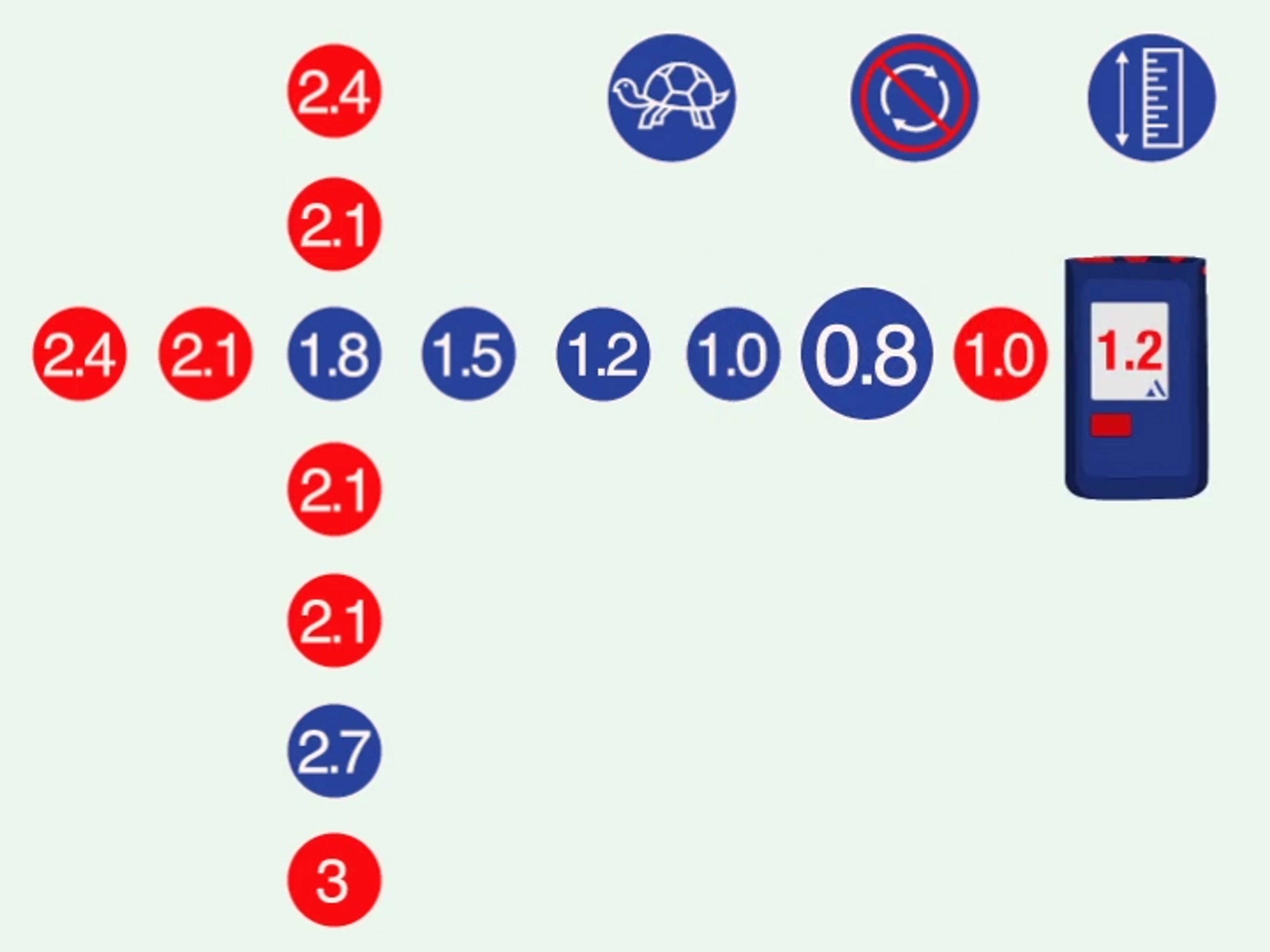Fine Search
Now it's time to slow down. The fine search requires careful and precise movements. Being accurate at this phase will make your probe search more effective.
Use a systematic bracketing pattern to find the closest point to the victim. Keep the transceiver steady. Don't change its orientation or its distance from the debris surface.
Only one person should perform the fine search; others should assemble probes and shovels. The video and images on this page demonstrate how to perform a fine search. When you're as close as possible, mark the spot well and start the next phase of the companion rescue.
Tap or hover over the icons to find out more.
 If the numbers on your screen increase, stop and reverse your direction. Move with your transceiver carefully back to your lowest reading. Continue with a systematic bracketing pattern to find the lowest possible reading.
If the numbers on your screen increase, stop and reverse your direction. Move with your transceiver carefully back to your lowest reading. Continue with a systematic bracketing pattern to find the lowest possible reading.
See the fine search in action.